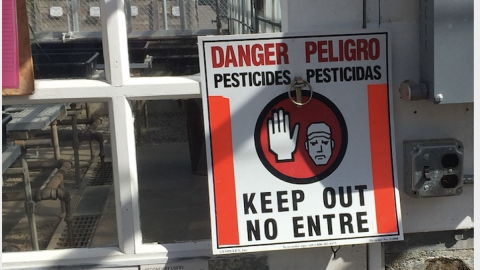Handheld pesticide application takes place in farming and forestry work, and unintentional exposures can be common. Few evidence-based and practical solutions have been developed and shared across these industries.
Project Overview
PNASH works with farmers, educators, and researchers across the Northwest to test and develop solutions originally developed by growers and workers for themselves. We have expanded from our original airblast application systems, to now include handheld and greenhouse applications. Each solution is assessed for the goals:
- reduce exposure,
- are practical, compatible, and convenient,
- support the requirements and training for state regulations and the revised US EPA Worker Protection Standard.
Findings to Date
- 50% interviewees have story of adoption/use in field.
- Reviewers found the online solutions visually appealing and accurate and the curated solutions useful.
Accomplishments
- 21 new solutions have been published in English and Spanish on our webpage. Each solution describes how pesticide exposure is reduced and share practices to reduce the exposure including a supply list, tips, photos, setup and use instructions, and links for more WPS information and relevant regulations.
- Developed a new remote approach to engage partners by providing a custom tablet used to gather pictures and conduct live walk-throughs and interviews.
- Completed adoption scenarios. For example, a participant adopted the room access protocol solution, motivated by the use of less pesticide products because they would only need to treat one room instead of several rooms.
- Developed a new PNASH e-learning course, Pesticide Learning Solutions, to demonstrate how to read a pesticide label, discuss pesticide exposure pathways and how to reduce exposure, share best practices for pesticide application, and provide pesticide safety resources from PNASH and regional and national sources.
Next Steps
In the coming year, we will be presenting solutions, developing flashcards for use in training, and evaluating grower interest and use. Our promotion plan includes social media and meetings (remote and in-person). We are partnering with Oregon State University Pesticide Safety Education Program (PSEP) and the national Pesticide Educational Resources Collaborative (PERC). In addition, we will also be participating in agricultural health and safety events in Washington and Oregon to share solutions and resources.
Training
- Practical Solutions for Pesticide Safety PNASH Online On-Demand Courses | Pacific Northwest Agricultural Safety and Health Center
- NASD Agricultural Training Series (e-Learning course) Keeping Pesticide on the Farm: Practical Solutions for Minimizing Family Exposure
- COMING SOON! Flash cards: Practical Solutions for Pesticide Safety.
Please reach out to pnash@uw.edu for assistance in sharing these solutions in your trainings.
Resources
Practical Solutions for Pesticide Safety | Pacific Northwest Agricultural Safety and Health Center.
Report Practical Solutions for Pesticide Safety.
Findings as reported at the end of year five are included in our annual report.
Principal Investigator: Kit Galvin, MS, BA, Senior Research Scientist, PNASH Center, University of Washington
NIOSH Funding Period 2016-2022

